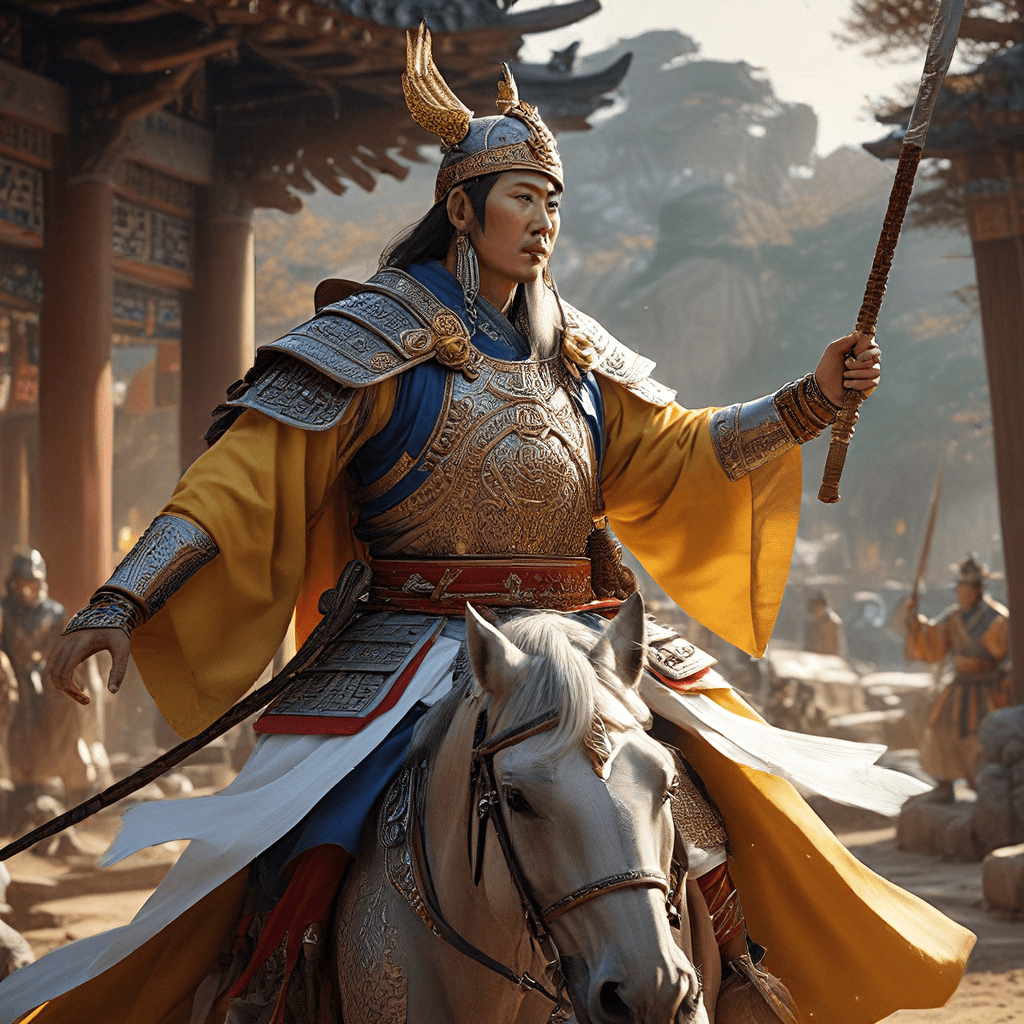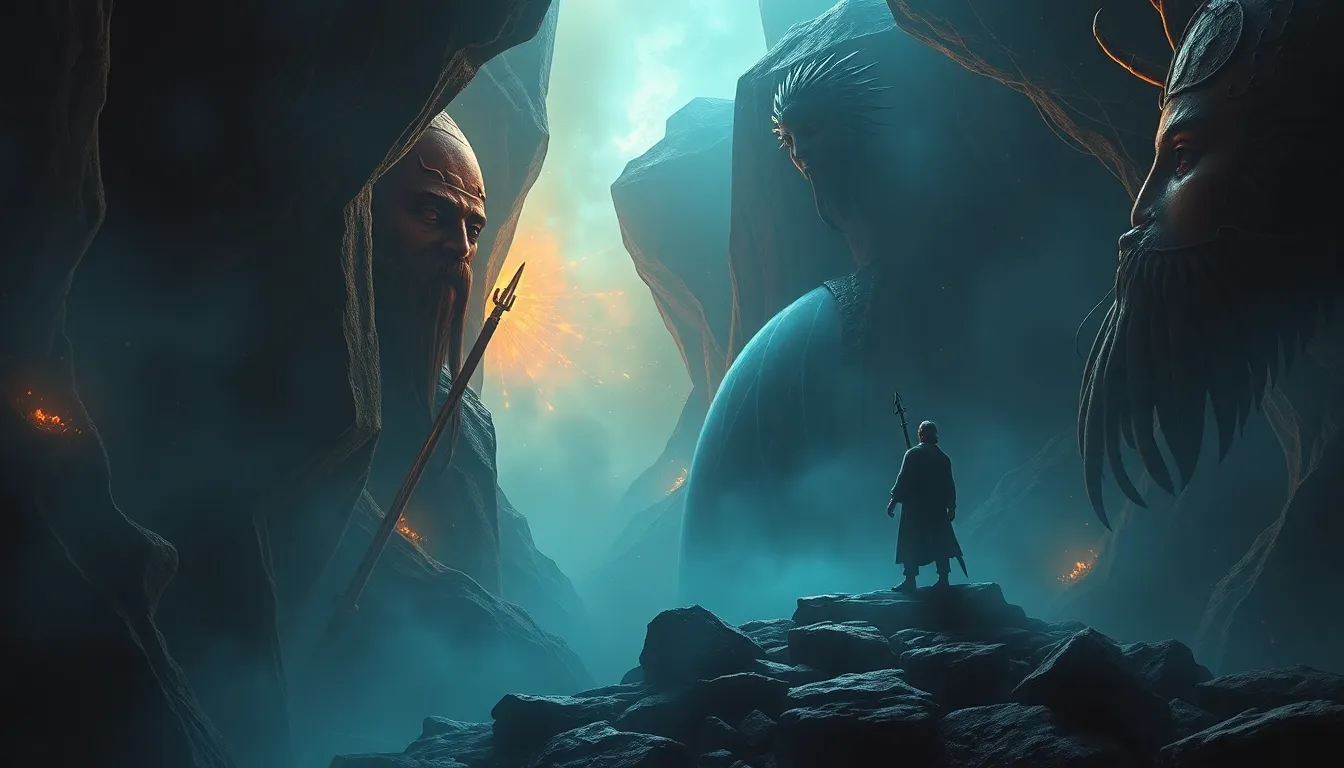The Huldra’s Rituals: Unveiling the Spirit’s Sacred Practices
I. Introduction to the Huldra
The Huldra is a fascinating figure rooted in Norse mythology and folklore, often depicted as a beautiful woman with a cow’s tail. This enigmatic spirit has captivated the imagination of many through centuries, embodying the essence of nature and the mysteries it holds. Traditionally, the Huldra is known to dwell in the forests and mountains, where she interacts with humans, sometimes luring them into her world, while at other times offering guidance and protection.
Significantly, the Huldra symbolizes the connection between humanity and the natural world. In various cultural traditions, she represents fertility, abundance, and the wildness of nature, reminding people of their reliance on and respect for the environment.
II. The Origins of Huldra’s Rituals
The rituals associated with the Huldra have deep historical roots, stemming from ancient beliefs about nature spirits and their influence on human life. In the agrarian societies of Scandinavia, the Huldra was seen as a protector of the forests and animals, and her rituals were often conducted to ensure a good harvest or a successful hunt.
Nature played a crucial role in shaping these rituals. The changing seasons, the cycles of life and death, and the interplay between humans and the environment all contributed to the development of Huldra practices. As a spirit of the forest, she was intimately linked to the land, and her rituals often mirrored the natural rhythms of the world around her.
III. Key Rituals and Their Meanings
Several major rituals are closely associated with the Huldra, each carrying its own unique significance and symbolism:
- The Blessing of the Forest: This ritual involves offerings of flowers and food left at the base of ancient trees, symbolizing respect and gratitude towards the Huldra as a guardian of nature.
- Rituals of Fertility: Performed during the spring, these ceremonies are aimed at invoking the Huldra’s blessings for bountiful crops and healthy livestock, often involving songs and dances that celebrate life and renewal.
- The Night of the Huldra: A midsummer festival where communities gather to share stories of the Huldra, light bonfires, and dance under the stars, fostering a sense of unity and connection to the spirit of the land.
Each of these rituals serves a dual purpose: to honor the Huldra and to reinforce the bond between people and nature, emphasizing the importance of living in harmony with the environment.
IV. Seasonal Celebrations of the Huldra
The Huldra’s rituals are closely intertwined with the changing seasons, reflecting the deep connection between her and the natural world. Each season brings distinct celebrations that align with the cycles of nature:
- Spring: Rituals focused on fertility and growth, including planting ceremonies and offerings to ensure a fruitful season.
- Summer: Celebrations during the summer solstice, where music, dance, and storytelling flourish as communities come together to honor the warmth and abundance of nature.
- Autumn: Harvest festivals that express gratitude for the bounty of the land, often accompanied by feasts and communal gatherings.
- Winter: Solstice rituals that acknowledge the quiet of winter, reflecting on the past year and preparing for renewal in the coming spring.
These seasonal rituals not only mark the passage of time but also reinforce the cycle of life, death, and rebirth that is central to the Huldra’s essence.
V. The Role of Music and Dance in Huldra Rituals
Music and dance are vital components of Huldra rituals, serving as expressions of joy, reverence, and connection. The rhythmic sounds of traditional instruments, such as the Hardanger fiddle, create an atmosphere that invites participation and celebration. These performances often include:
- Traditional Songs: Melodies that tell the stories of the Huldra, her relationship with nature, and the experiences of those who encounter her.
- Circle Dances: Community dances that symbolize unity and the interconnectedness of all beings, often performed around a bonfire during festivals.
The vibrant energy of music and dance fosters a communal spirit, encouraging individuals to connect not only with the Huldra but also with each other, reinforcing the values of community and shared heritage.
VI. The Connection Between the Huldra and Nature
The Huldra’s deep-seated relationship with nature is a core aspect of her identity. As a spirit of the wilderness, she embodies the beauty, power, and unpredictability of the natural world. Rituals honoring the Huldra often emphasize the importance of environmental stewardship and respect for all living beings. Through these practices, communities express their commitment to:
- Preserving natural habitats.
- Protecting wildlife and ecosystems.
- Celebrating the beauty of the land through art, storytelling, and ritual.
By honoring the Huldra, practitioners aim to foster a deeper understanding of their place within the web of life, acknowledging that their actions have consequences for the environment and future generations.
VII. Modern Interpretations and Revivals of Huldra Rituals
In recent years, there has been a resurgence of interest in Huldra rituals as part of a broader movement towards reconnecting with nature and ancestral traditions. Contemporary practices draw inspiration from historical rituals while adapting them to modern values, such as environmentalism and spirituality. Some examples include:
- Nature retreats that incorporate Huldra-inspired rituals, emphasizing mindfulness and connection to the earth.
- Community festivals that celebrate local folklore and encourage sustainable practices, fostering a sense of belonging and shared purpose.
- Artistic expressions, such as theater and music, that reinterpret Huldra stories and rituals for new audiences.
This revival not only keeps the Huldra’s legacy alive but also encourages a new generation to appreciate the wisdom of nature and the importance of cultural heritage.
VIII. Conclusion: Preserving the Legacy of the Huldra’s Sacred Practices
The Huldra’s rituals represent a rich tapestry of cultural heritage, storytelling, and reverence for nature. As we navigate the complexities of modern life, the lessons embedded in these rituals remind us of the importance of connection—to each other, to our communities, and to the natural world.
Encouraging awareness and appreciation of Huldra rituals can inspire a renewed commitment to preserving our environment and honoring the traditions that have shaped our understanding of the world. By embracing these sacred practices, we can ensure that the legacy of the Huldra continues to thrive for generations to come.



